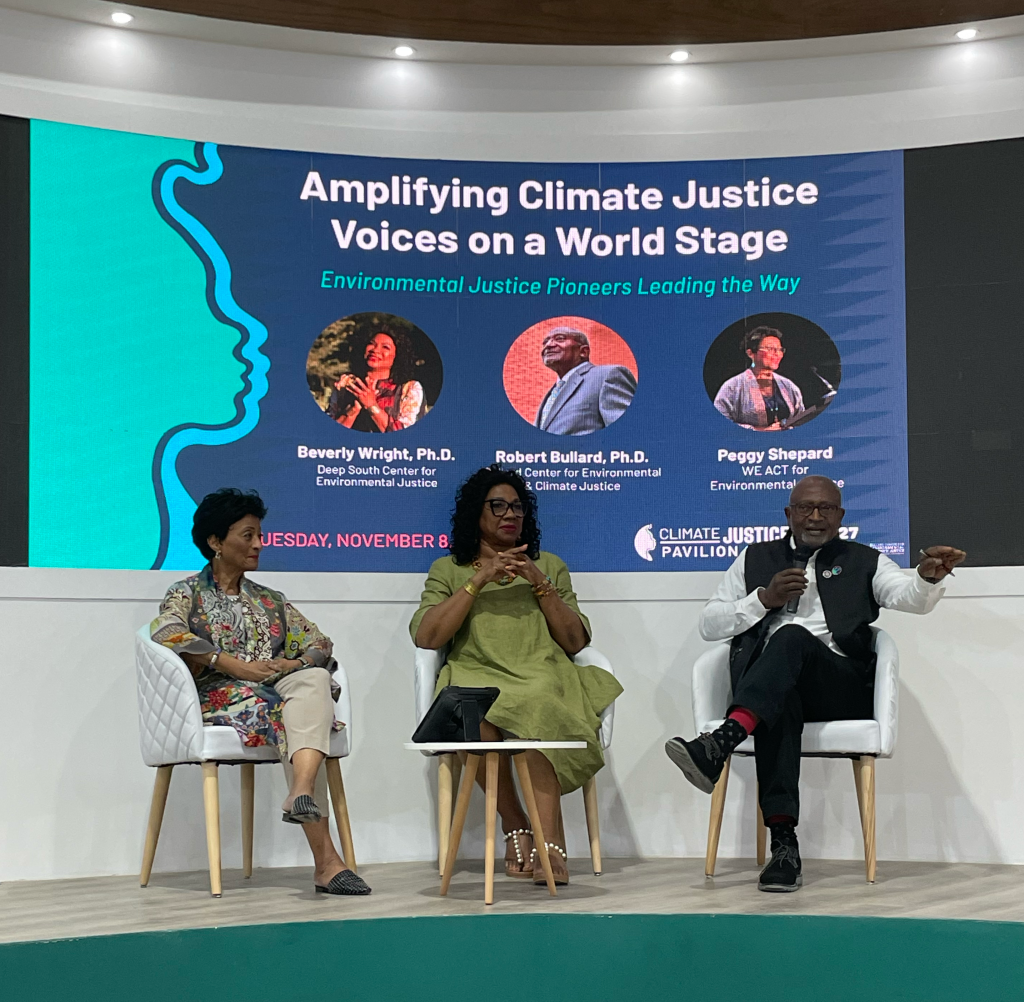by Chris Stone ’23 (he/they)
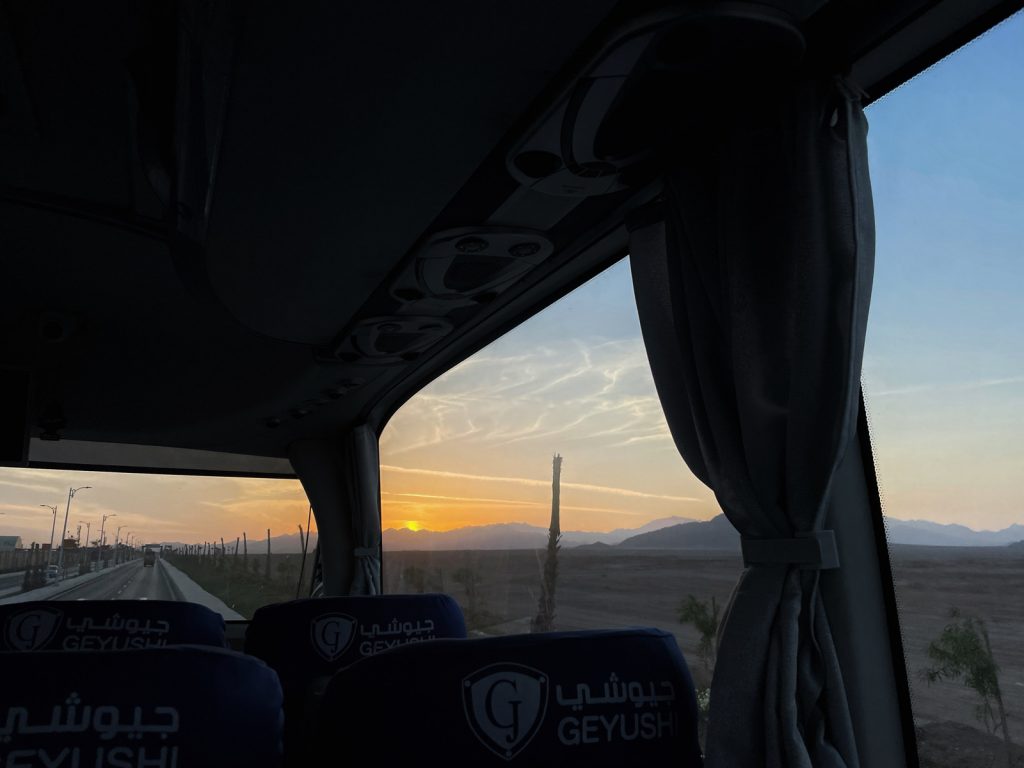
Where are you from?
I’m from the US.
Okay, but where are you really from?
It’s a question I’ve often been asked at the COP 27 conference.
It’s a question that usually makes me cringe, as an Asian American and one of the few in my family to be born in the US. It’s a question that comes tinged with a sense that somehow every Asian is a new pervasive immigrant despite several hundreds of years of Asians in America (see: The Making of Asian America by Erika Lee, 2015). With it goes the myth of the American Dream, of being a “model minority” who can achieve being “American” if we just pick ourselves up by the bootstraps.
However, here at COP 27, it’s a question I am, for once, excited to answer:
I’m Burmese Chinese, and my parents immigrated from Myanmar.
And after some chatting, we get to the point where I clarify that Myanmar is not at this conference.
Neither were they last year, after the return of the military coup in February 2021, striking violence across the country in the midst of a worldwide pandemic. I remember that day, feeling my face getting heated, my throat closing up, and my eyes starting to water. I remember the unbearable frustration I shared with the few other peers with ethnic heritage from Myanmar I had, seeping out and spilling over. Just as we had grown up struggling to search for legitimate streams of information about what was going on in the country outside what we knew from those we were directly connected to—some of us furthermore illiterate in our native languages—our calls to action for international support made far from the headlines, or the headlines that did were riddled with disinformation.
Yet, as the country is a member of the UN, I still found this sign in the overflow room for the plenary.
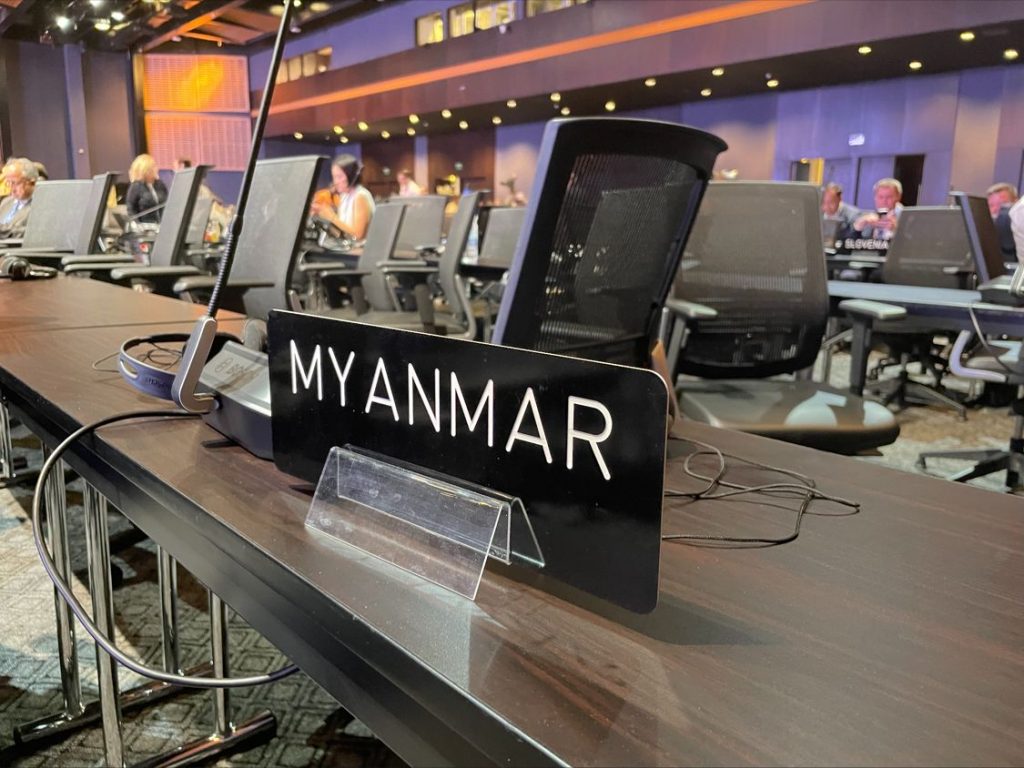
I’m excited to share my ethnic heritage with people in the hopes I might find someone else out there from an ethnic group of Myanmar. To have a connection with more than a plastic sign here. Even with my complex feelings about the notion of a “national identity” around “Myanmar”, I knew the exclusion of the country would be one of the largest defining factors in my ability to find other members of the diaspora. I knew it would mean the global conversations around climate change would move on without acknowledging the people in that country, my friends and family, who have been undergoing floods at unprecedented scales across the recent years, putting a global biodiversity hot spot at risk. It’s my fourth day here, and I have been thankful to the many people who have tried to connect me to groups that might be able to help… but I still haven’t succeeded.
This will not stop my search.
On the other hand, what I did find were other youth who shared similar sentiments:
Oh, I am/We are also from a community that is not represented at this conference, attending through other means.
These peers too understood the experience of being of communities that are silenced from the international political dialogue, one that has been structurally designed to erase us. We sit as observers in negotiation rooms as jargon flies by, we sit as the pressure of what all these conversations are supposed to mean to us creeps in. We ask each other:
So… why we even here?
And is that enough?
Am I doing enough, to carry the burden of all my ancestors before me who worked hard so I could be here now?
It’s hard to watch, as people move in groups all around me, connected by one thing or the other, while feeling so incredibly aware of how, if not for colonialism, imperialism, you name it… there would be others like me too. It’s certainly not a new feeling, but it is one that hits different each time it comes up again.
Suddenly, I feel so small.
Though, having someone that understands makes me feel, a little less small, and a little more of a sense of belonging.
I am reminded of a quote that too, re-emerges just as often:
There’s really no such thing as the ‘voiceless’. There are only the deliberately silenced, or the preferably unheard.
Arundhati Roy
Marginalized peoples, whether acknowledged by international political powers or not, have never been “voiceless”. We have been fighting for hundreds of years. Our voices continue to ring on.
There have been many references to the centerpiece of this COP:
This is the year that COP 27 actually moves towards acting on implementation.
This is the year that COP 27 actually centers food systems.
This is the year that COP 27 actually supports youth participation.
This is the year that COP 27 actually addresses loss and damage.
Well, I can tell you for a fact that this is the year that COP 27 has a Climate justice Pavilion in the Blue Zone, in spite of representing people that would otherwise be in the Green Zone, one-off events to check off the “diversity” requirement of their programming, or not present at all. I am thankful to have had the invitation to volunteer with them during my time in the conference through one of the main organizers WeACT for Environmental Justice. One of WeACT’s top community priorities is energy security and I connected with them through Young Professionals in Energy-NYC’s mentorship program.
I am continuously starstruck to meet environmental justice leaders whose works I’ve read in class or podcasts I’ve listened to while on the subway or online webinars I attended from my bedroom, and to be actively part of the work to support them. I could only describe this as a fraction of the amount of gratitude I have. Their work has pushed me to further dive into decolonizing my own identity, and working for and with community.
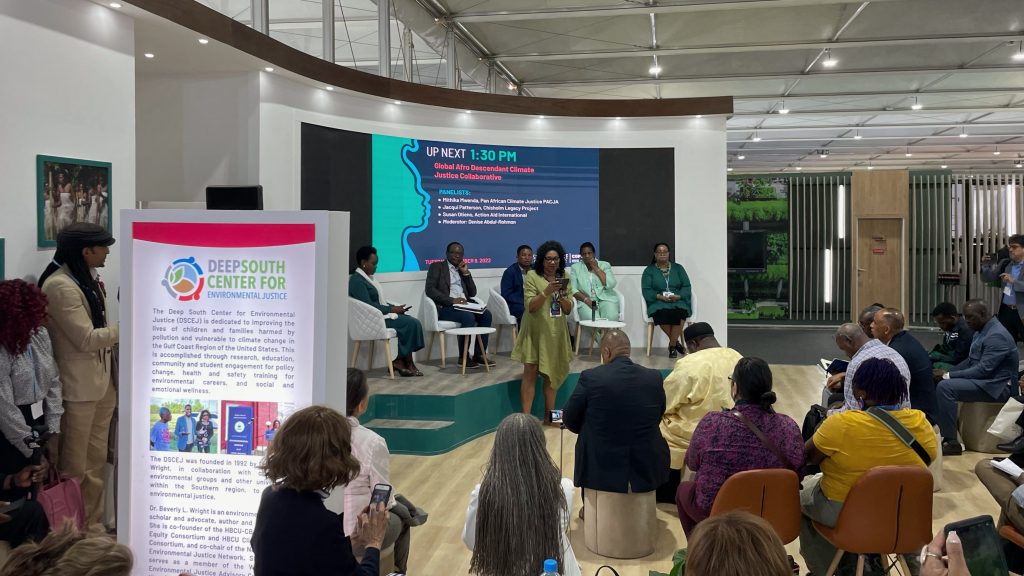
As the first event “Global Afro Descendant Climate Justice Collaborative” unfolded, the energy could be felt in the room:
One chants: What do we want?
All join in: Climate Justice!
One: When do we want it?
All: Now!
Now. Now!
Now is and always has been and always will be, across every moment in the movement for social justice, the time for those responsible for the climate chaos we are experiencing to compensate those from which they have extracted from and disproportionately sacrificed, from Black and brown communities in the Global South and the reconstructions of Global South within the Global North.
There is no climate justice without social justice. Until then, none of us are free.
The panelists made it explicit: racism is baked into COP27 proceedings. Climate reparations must be in dialogue, must be paid up, and must be noted as only a piece to addressing a history of systemic injustice.
Having voices from climate justice communities be represented for the “good optics” is not enough. They need to be centered, and actions must be taken to implement the solutions that will genuinely address the needs for/with/by those at the frontlines. An example of an approach to this is what Dr. Robert Bullard would refer to as “community-based participatory research”.
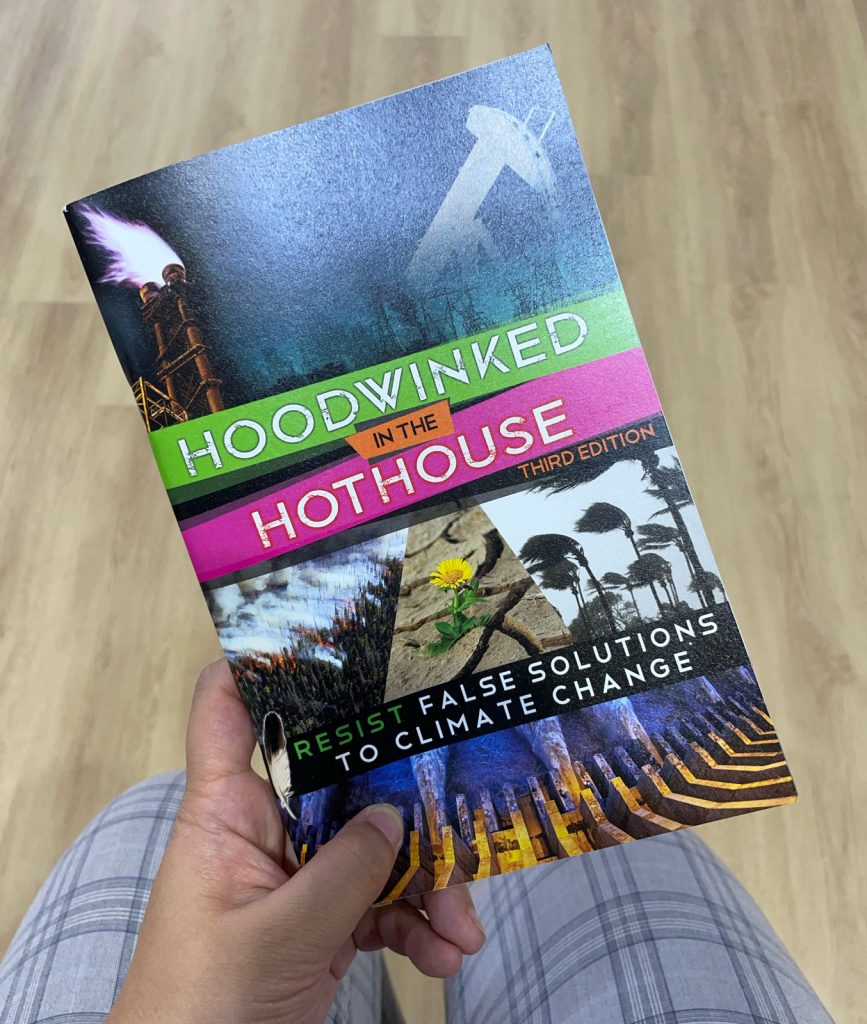
A member of Climate Justice Alliance stopped by to hand off copies of the latest edition of Hoodwinked in the Hothouse: Resist False Solutions to Climate Change. I recognized it right away. After all, one of the contributing organizations, Energy Justice Network, collaborate along with Chester Residents Concerned for Quality Living (CRCQL) to engage Swarthmore College students in the Environmental Justice courses and Campus Coalition Concerning Chester (C4) in the fight against the nation’s largest incinerator for “waste to energy” (a common false solution) located in the city of Chester.
Chester, less than 4 miles away from our campus, is a predominantly low-income African American community faced with generations of health conditions due to the toxins they were being forced to live with in the air. Air that travels along to even our seemingly unaffected predominately white institution located on an arboretum designed on stolen land. CRCQL has been in this fight for over 20 years, and they have been told before that if did not take the trash coming in from all across the US, then it would be sold to be shipped and dumped to another country in Africa—perpetuating the global waste trade (see: Resisting Global Toxics: Transnational Movements for Environmental Justice by David Pellow, 2007).
If you don’t think you live in an environmental justice community, then you’re living next to one.
Zulene Mayfield, while visiting our class last year
After the second event of the day at the pavilion, “Climate Litigation in South Africa: Vulnerable communities resisting fossil fuels and protecting their right to participation (Earthjustice)”, members from the audience joined in to share their experiences, their fights, their wins, and their strategies, from Liberia to Zimbabwe to Puerto Rico, picking up between each other while sharing their truths. Local revolutions collectively all part of one big revolution, reminding me of The Next American Revolution: Sustainable Activism for the Twenty-First Century by Grace Lee Boggs, 2011.
The Blue Zone’s dominant operating narratives put global climate justice stakeholders at a dissonance from one another. Climate Justice Pavilion is not just a site of resistance to dismantle these narratives, it is a site of healing and grounding. The Climate Justice Pavilion structurally configures itself subversively, building power and kinship in solidarity for a just climate transition across cultures, faiths, and generations.
